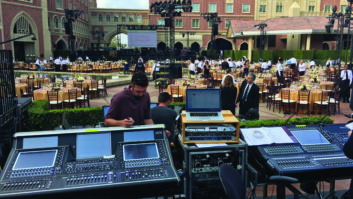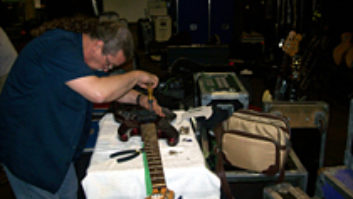Old news: 192 kHz is here. Actually, there’s nothing new about 192kHz recording; I made my first 192kHz recording four years ago, using a stereo pair of dCS converters, streaming high-resolution PCM to a Nagra-D for storage. But the news these days is a growing proliferation of affordable 192kHz recording systems and peripherals, ranging from the low-cost I/O interfaces from companies such as Lynx and Ego Sys to Digidesign’s much-touted Pro Tools|HD. Suddenly, everybody can go 192.
Don’t get me wrong: I’m as much a fan of hyperfidelity as anyone, but with the power to wield a sword as mighty as 24/192 comes the responsibility of doing it right. Making the leap to recording’s high-res hyperspace does not magically ensure a wonderful end product. So, while you’re looking at a major upgrade, this is a perfect opportunity to re-examine everything else in your recording chain — particularly those analog components such as mics, preamps and speakers (mains and near-fields). Once your workstation can play back sounds with a bandwidth approaching nearly 100 kHz, studio monitors that roll-off at 15k to 18k don’t cut it.
The same tenets can be applied to your hard drives. Will they offer reliable performance, given the rigors of high-res multitracking? Even items as lowly as cables — mic, SCSI, etc. — must stand up to the challenge. I once spent an enlightening afternoon running frequency-response sweeps on a box of generic — and not so generic — XLR cables from an old P.A. rig that was stored at my studio. Some of these cables couldn’t pass 19 kHz, much less 96 kHz! Scary.
But even scarier to me is a widely held assumption that the arrival of 192kHz production somehow makes everything else obsolete. True, 192 kHz is great, cool, wonderful. However, this hardly means that 96kHz — or even 48kHz — products should immediately be sent to pawn shops and garage sales. The bottom line? If you could make a great record on last year’s stuff, then that equipment will still sound great this year, and the same applies to analog.
I guess the moral is: Don’t buy into specs for specs’ sake. Back in 1988, an artist wanted some background string pads and horn stabs on a project I was tracking. No problem: I had an Emulator II and a huge sample library, but the artiste had a brand-new Casio FZ-1 16-bit sampler and didn’t want any 8-bit E-II on his masterpiece. We A/B’d both: The E-II smoked the FZ-1, which made everything sound like shrill harmonica. Numbers don’t tell the whole story. Listen, and use what sounds best.
This is a time to celebrate the new age of 192kHz production — at least until the really cool 32-bit/384kHz gear comes out, but hopefully that won’t be for another couple months.
NEWS FLASH!
Just as we went to press, we heard the joyous news about the arrival of Riley Marie Trubitt, a charming 6-pound, 5-ounce addition to the family of our classifieds/marketplace advertising director Robin Boyce-Trubitt and her husband Rudy Trubitt. At last report, mom and dad were taking some days (and sleepless nights!) off to tend to the needs of this future audio engineer. Congratulations!




